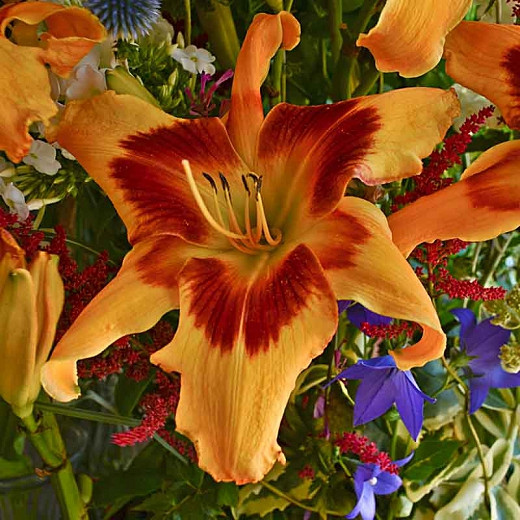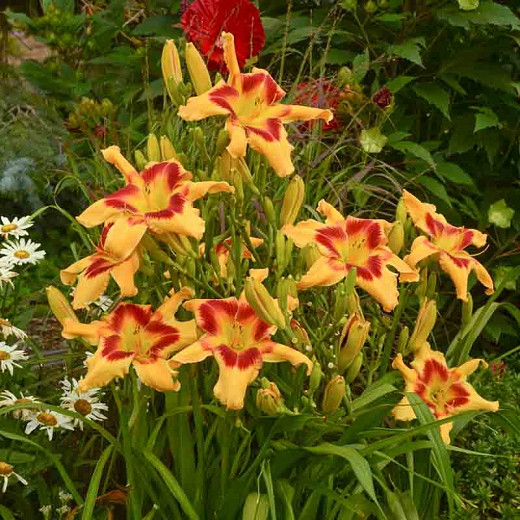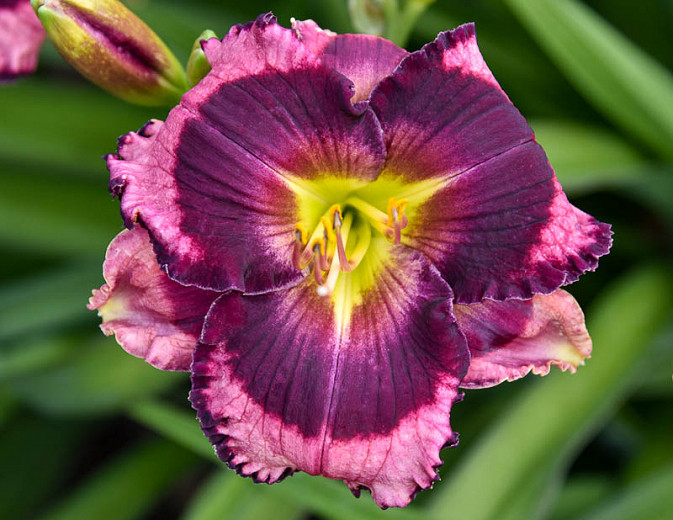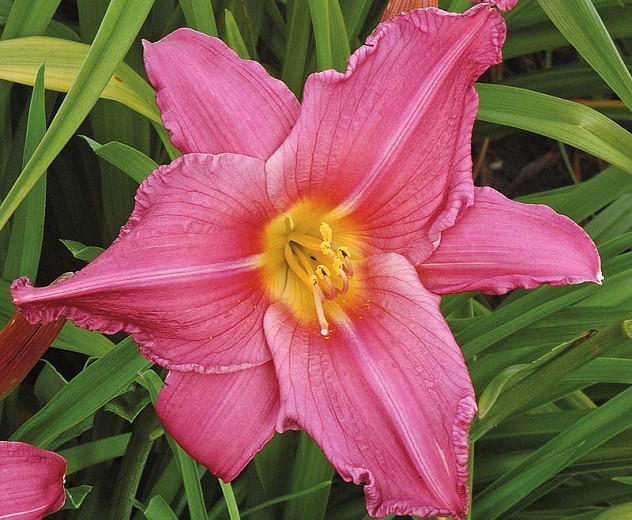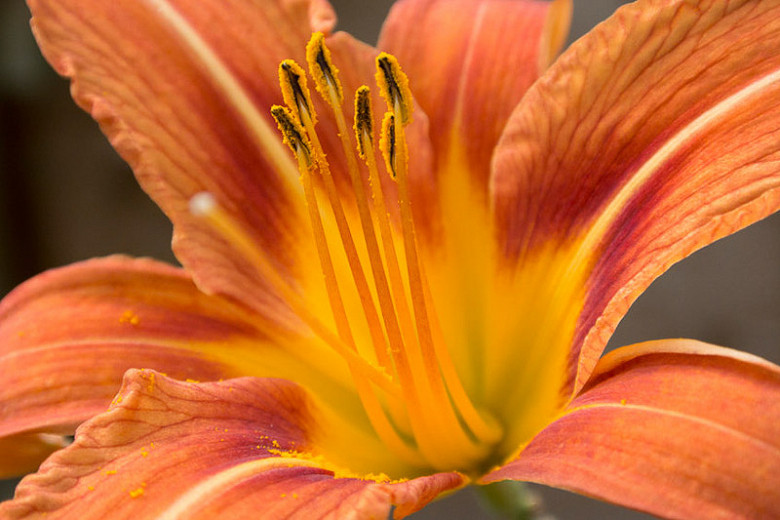Hemerocallis Tiger Swirl (Daylily)
Noted for its uniquely shaped petals, Hemerocallis ‘Tiger Swirl’ is a midseason Daylily with masses of very large, fragrant, pale golden yellow flowers adorned with a conspicuous raspberry-red eye. Its bottom sepals are smooth, often twisting or curling into a “swirling” motion.
Noted for its uniquely shaped petals, Hemerocallis 'Tiger Swirl' is a midseason Daylily with masses of very large, fragrant, pale golden yellow flowers adorned with a conspicuous raspberry-red eye. Its bottom sepals are smooth, often twisting or curling into a “swirling” motion. Each flower, up to 7 in. wide (18 cm), typically lasts no more than 24 hours (thus the common name 'Daylily'). The flower scapes have well-branched, 3-way scapes and near 12 buds per scape, packing quite a punch with its flower performance. Blooming in midsummer, this tetraploid Daylily is dormant (deciduous).
- Grows up to 32 in. tall (80 cm) and spreads via rhizomes to 18-24 in. (45-60 cm).
- An ideal choice for shrub borders or perennial beds, as ground covers on slopes or in containers near the patio.
- Often called the 'perfect perennial' because of its numerous qualities: showy flowers, drought tolerance, heat stress immunity, ability to grow in most hardiness zones, and low care requirements, this Daylily is a remarkable and stunning addition to the garden.
- Thrives in full sun to part sun in average, moist, but well-drained soils. While it performs well in a wide range of soils, fertile loam is preferred. Tolerates heat and summer humidity, but thorough watering is required to ensure its foliage remains attractive.
- Daylilies attract butterflies and hummingbirds but are toxic to cats. Rabbits tend to avoid daylilies.
- No serious pest or disease issues. Keep an eye out for mites, aphids, thrips, or daylily rust.
- The best time to plant Daylilies is in early fall or early spring.
- After flowering, remove spent blooms and seedpods to improve the appearance and encourage rebloom. When all the flowers on a scape are finished, cut off the scape close to ground level. Remove dead foliage from daylilies as they die back in the fall.
- Bred by Rasmussen in 2000, it won the Honorable Mention Award of the American Daylily Society in 2008.
Requirements
| Hardiness | 3 – 9 |
|---|---|
| Heat Zones | 2 – 11 |
| Climate Zones | 1, 2, 3, 4, 5, 6, 7, 8, 9, 10, 11, 12, 13, 14, 15, 16, 17, 18, 19, 20, 21, 22, 23, 24, H1, H2 |
| Plant Type | Perennials |
| Plant Family | Hemerocallis – Daylilies |
| Exposure | Full Sun, Partial Sun |
| Season of Interest | Summer (Mid) |
| Height | 2' – 3' (60cm – 90cm) |
| Spread | 1' – 2' (30cm – 60cm) |
| Spacing | 18″ – 24″ (45cm – 60cm) |
| Water Needs | Average |
| Maintenance | Low |
| Soil Type | Chalk, Clay, Loam |
| Soil pH | Acid, Alkaline, Neutral |
| Soil Drainage | Moist but Well-Drained, Well-Drained |
| Characteristics | Fragrant, Plant of Merit, Showy |
| Tolerance | Drought, Rabbit |
| Attracts | Butterflies, Hummingbirds |
| Garden Uses | Beds and Borders, Edging, Ground Covers, Patio and Containers |
| Garden Styles | City and Courtyard, Informal and Cottage, Prairie and Meadow, Traditional Garden |
